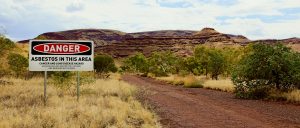From Ancient Times to Modern Regulations: The Long and Complex History of Asbestos
Asbestos has a long and storied past, dating back to at least 4500 BC. Historical evidence suggests that even the ancient Egyptians used this fibrous mineral, wrapping their dead in asbestos cloth to preserve the bodies. Stone Age artefacts, too, bear witness to the prevalence of asbestos fibres used during that era.
This material seemed to promise great utility, but even in ancient times, observers like the Greek geographer Strabo noticed a troubling pattern: a “sickness of the lungs” among slaves who wove asbestos into fabrics. By the time of Marco Polo, asbestos’s ability to withstand fire was well-known, with records from the 13th century speaking of cloth that would not burn.
Asbestos in the Industrial Revolution
The industrial revolution of the 19th century marked a significant increase in the use of asbestos due to its remarkable properties. Asbestos was lauded for its resistance to heat, water, rust, and electricity, making it a prime material for an expanding industrial landscape. Its ability to be processed into a fine powder to create a paste, woven into cloth, or mixed with cement to form robust building materials contributed to its widespread adoption.
The mining and transportation of asbestos were relatively straightforward, which led to its exponential growth in use. However, by the early 1900s, the tide began to turn as social historians and factory inspectors observed a disturbing trend. They reported a rise in premature deaths and severe respiratory diseases among those who worked with asbestos, findings echoed in the annual reports from the HM Factories Inspector.
Asbestos – the warning signs
The first officially documented death directly linked to asbestos occurred in 1924, involving a 33-year-old woman who worked in a textile factory and was found, upon autopsy, to have suffered severe fibrosis and lung damage. This case marked the beginning of a slowly dawning awareness of the material’s dangers.
In the 1930s, the use of asbestos continued to expand throughout the United Kingdom. Its application was not limited to industry; it found its way into military equipment, serving as filters in gas masks during wartime. With the arrival of peace, asbestos became a common insulator in new schools, offices, hospitals, and homes, as well as in soundproofing, fireproofing, and construction.
The versatility of asbestos meant that it was almost omnipresent, appearing in factories, power stations, steelworks, railways, shipbuilding, automotive garages, and mills. Yet, as its uses grew, so did the concerns about the risks it posed to health.

Asbestos actions to protect health
In response to the increasing evidence of asbestos-related health risks, the UK government introduced the Asbestos Industry Regulations in 1931, a pioneering move aimed at curtailing exposure in workplaces where asbestos was processed. However, it wasn’t until 1960 that a watershed moment occurred in the understanding of asbestos-related diseases. JC Wagner’s study on “Diffuse Pleural Mesothelioma and Asbestos Exposure in the Northwest Cape Province” clarified the clear cancer risks associated with asbestos.

Further legislation followed, with the Factories Act 1961 imposing stricter controls over dust emissions, including those from asbestos. The critical turning point came in 1965 when Newhouse and Thompson published a report establishing that there were no safe levels of exposure to asbestos. This revelation was monumental, underscoring the need for stringent regulation and protection for workers.
Legal recognition of the dangers of asbestos was underscored in 1972 when Thompsons Solicitors brought forward the first successful asbestos-related disease claim before the House of Lords, setting a precedent for future legal battles over occupational health.
In 1985 there was an importation ban on blue and brown asbestos (crocidolite and amosite), but industry claimed that white asbestos (chrysotile) remained ‘safe’. Finally, after decades of increasing restrictions and growing awareness of the material’s lethal consequences, the use of asbestos was outright banned in the UK on 24 November 1999.
This ban marked the end of a long chapter in industrial history but the beginning of a new era of awareness and safety in the handling of hazardous materials. The history of asbestos—from its ancient uses to its eventual ban—serves as a poignant reminder of the need for vigilance in protecting public health and the well-being of workers. It’s a story that continues to unfold as we deal with the legacy of asbestos exposure and strive for a safer future.
If you have any concerns on asbestos in your environment, reach out to us for advice.
We also have some other content you may find interesting:




